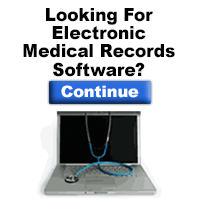Top EHR Systems for Ophthalmology
Read on for evaluation data and see the quote below to compare electronic health record systems for ophthalmologists.
Ophthalmology practices tend to be smaller than other specializations, which is why many ophthalmologists were initially reluctant to adapt electronic medical records (EMRs) into their practices. It can be costly for small clinics, plus it has a steep learning curve that might discourage their staff in using it for work. However, EMRs specially designed for ophthalmologists have their benefits, once the physician and his staff are able to overcome the initial learning curve and incorporate EMRs into their practice.
Here are some ways that ophthalmologists can make use of EMRs:
- For patient education. Patients often want to be hands-on regarding their treatment and thus would like to learn more about their diseases and its possible cures. With an EMR, ophthalmologists can easily use visual aids to explain to patients what they are experiencing, such as a retinal or corneal photograph that can be accessed from devices like tablets and smartphones. This way, doctors are able to teach their patients all about their condition in layman’s terms, whether it is age-related macular degeneration or dry eye.
- For efficiency. EMRs save time spent on writing referral letters to other physicians. Instead of writing them down, ophthalmologists can simply dictate the contents of the letter, and then save it as a template for future use. Other templates can also be done to save energy and time.
- For improved patient safety. A reliable EMR system can help improve patient safety and quality of care. In ophthalmology practices within the hospital, EMRs provide instant access to patient information while also eliminating illegible handwriting that could impede communication with other health providers and patients, hence reducing the incidence of medical errors and other adverse events.
- For proper documentation. Date once entered into the EMR system can be made available anywhere needed, even for audits for insurance purposes. Unlike paper documents, these electronic data are more secure because they cannot get lost or be damaged by any disaster.
Among the most popular EMRs for ophthalmology are the following:
- EMA Ophthalmology. Built by practicing ophthalmologists, the EMA Ophthalmology EMR help doctors to work faster and improve healthcare through creating efficient systems, improving outcomes, and seamlessly integrating with other EMRs. It expedites the paperwork process, hence increasing patient and physician engagement and interactions.
- Amazing Charts
- EyeMD EMR. This system provides coding assistance that automatically suggests the appropriate diagnostic tests and ICD-9 codes based on the data collected during the exam. It also offers other features like flagging of unread charts, order follow-up, workflow manager, template creator, and patient flow management and lab interfaces.
- Centricity EMR
- EMRexperts. This ophthalmology-specific EMR system includes custom templates for history of present illness, complaints, review of systems, medication prescribing, CPT coding, and immunization tracking. It also incorporates electronic bill and E&M coder customized for ophthalmologists.
- eClinicalWorks
Complete this quick form to compare Ophthalmology EHR systems and costs:

